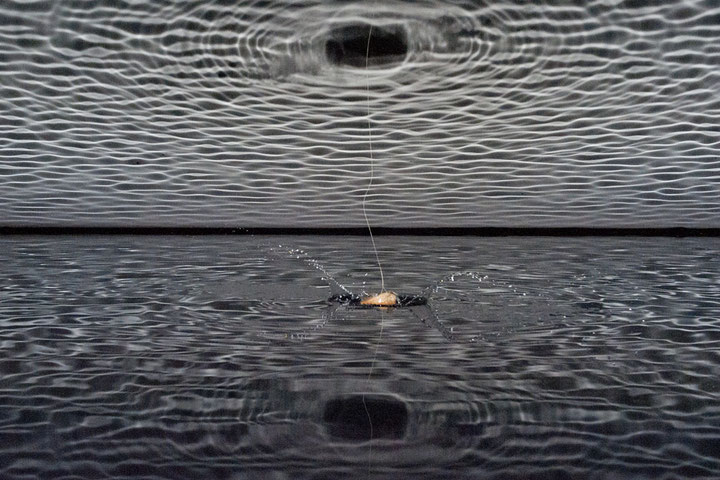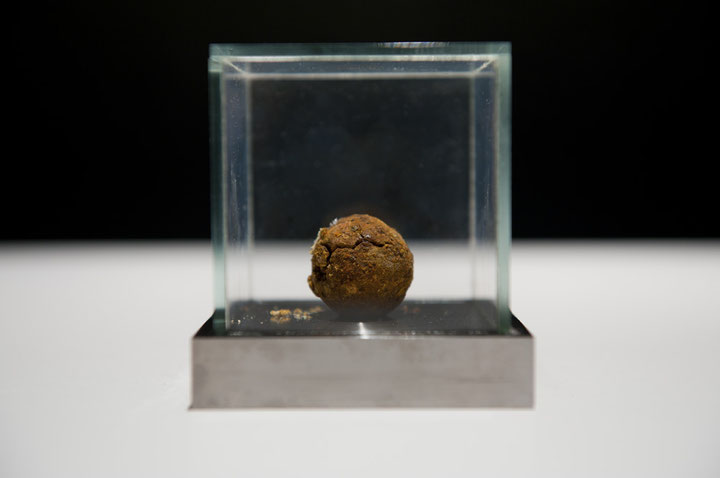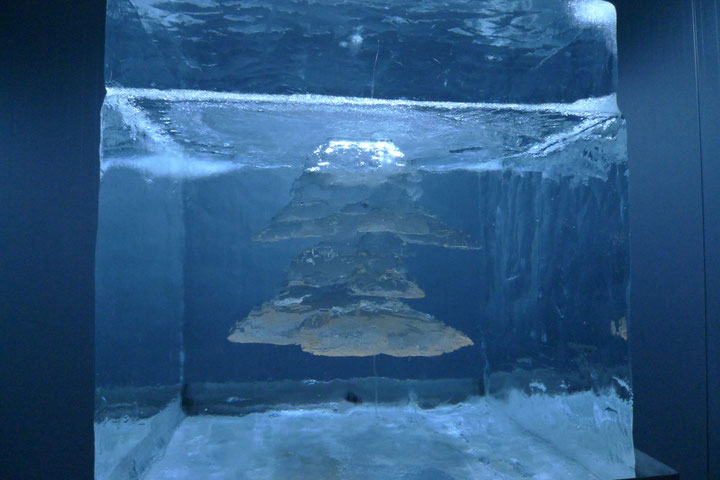Rotterdam had to wait a long five years for its normally bi-–annual Dutch Electronic Art Festival (DEAF), organised by V2_Institute for the Unstable Media, to return. Coinciding with V2_’s thirtieth anniversary the festival offered an exhibition and symposium, accompanied by a comprehensive programme of workshops, lectures, performances and other events under the title »The Power of Things«. This edition of DEAF explores how materials – dead or alive – relate to each other and shape the environments they exist in. It showcases an interesting development in new media art: if the 90s were about disembodied virtuality and the 2000s signalled a return to the corporeal, now the power and significance of non–living matter, things and objects are being thrown into the mix. It is perhaps not a coincidence that during a time of crisis and austerity an emphasis on materiality surfaces. Moreover, what DEAF should be commended for is bringing a word like »beauty«, much despised or deemed unfashionable in contemporary art circles, back as a creative force to reckon with.
It is therefore a pity that DEAF did not succeed in fully and radically pushing through the concept for the exhibition on the curatorial and display level. If the crux of the festival was about how things relate to each other, then why was so little attention paid to the interaction between the art works and the magnificent architectural venue that housed the exhibition, Rotterdam’s monumental old postal building (1923)? Why were the works placed messily in the space as hermetic objects with little connection to each other or their environment, and with a disregard for the – quite imposing – characteristics of the building. Indeed, the whole look of the exhibition felt as if the emphatic viewing conditions of the white cube, a corporate trade show and the postal building were equally vying for attention – unsuccessfully. Perhaps this is due to the fact that electronic art exhibitions have long been plagued by a black box aesthetic of exhibition making, where the viewer is overloaded by screens and audio–visual stimulation. It is refreshing to see a show that tries to overcome this, but a shame that its very purpose is somewhat defeated because it fails to take to heart its very premise, namely »the power of things«, and what happens when »things« are placed next to each other in a specific context.
Regardless of the disappointing display, DEAF showed many excellent pieces. The strongest works were those that underlined and represented materially and aesthetically the poetics of artistic »poiesis«, i.e. the generative production of an artistic work, such as in Olafur Eliasson’s well–known water piece »Notion Motion« (2005). Roman Kirschner showed »Maelstrom« (2010), a beautifully painterly dynamic object that comes into being through the liquid movement of magnetic powder. This live drawing changes continuously, leaving traces of forms and lines, between presence and absence. A similar ephemeral presence can be discerned in Dutch artist duo Driessen & Verstappen’s understated installation »Sandbox«, an artificially created mutable sculpture of tiny sandy dunes encapsulated in a black diorama. Seated on a stool, the viewer is transported through this mini–ecology of sand and wind, which changes and unfolds in front of your eyes. Also Jessica de Boer’s graduation project for the Royal Academy of Art in The Hague »Sealed« (2008) beautifully illustrates what happens when you bring together two entities of dead matter, respectively a 1000kg block of ice and 10kg of solid salt crystal. A thermodynamic process of salinisation creates a slowly changing salt sculpture in the refrigerated block of ice. The experience of wrapping oneself in a duvet before entering de Boer’s specially constructed freezer and witnessing this wondrous icy object of nature is simultaneously as exciting as it is serene. Another strong and condensed statement on the force of matter – and of nature – was to be found in Kianoosh Motallebi’s »Terrestrial Ball« (2010), a tiny spherical object made of the 94 elements that can be found naturally on earth such as oxygen, carbon, helium, aluminium, lithium, silicon, iron, copper, etc. or in other words, the periodic table of the elements which make up the world, encapsulated in a micro–cosmos not even the size of a ping–pong ball. The work poses an ironic reality–check: everything around us can be brought back to the elements that are to be found in that little ball; a nice exercise in scale and relativity.
Works that referenced bio–technology, human intervention and mechanical dexterity in too literal a way broke with the powerful gesture of object aesthetics and poetics, and failed to engage. »The Small Protein Translation Machine«, a project of SymbioticA’s Tissue Culture and Art Project, featured a piece of in vitro meat growing in a bio–reactor, and the »Open_Sailing« (2010) project, which develops open–source technology for unmanned boats cleaning up oil spills, as well as Mark Shepard’s »Sentient City Survival Kits«, and Marnix de Nijs’ »15 Minutes of Biometric Fame« (2011), which combines face recognition of the audience and identifies their facial features with celebrities, felt uncomfortably out of place in the exhibition. These projects were all former V2_ co–productions with their own merit, but placed within the context of »The Power of Things« felt forced, and weakened the exhibition as a whole. DEAF could have put on an exceptionally strong show and taken electronic art exhibition–making to a new level if only it practiced what it preached on the power of things in its selection and installation of the art works. Things do function, and create meaning, in a network and in relation to each other. It is therefore all the more surprising that a festival that bases its very thematics on this subject, neglects to see this through in its execution.
16 May – 3 June 2012
Rotterdam
http://www.deaf.nl


